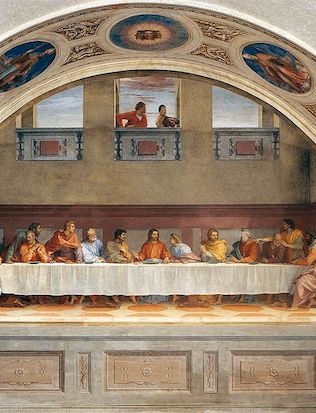The remains of the monastery of San Michele a San Salvi are to be found on a side street, close to a tangle of main roads, in a scruffy semi-industrial suburb of Florence. There is a school playground next door, which is empty of children and overgrown with weeds because the long summer holiday is not yet over. There is a bar on the corner that serves a pungent, bitter espresso. The barman has heard there is a good painting in the church, but he has never been to see it. He would rather visit London. "Piu da veder' qua in un giorno che qui in un' anno", he says wistfully: more to see there in a day than here in a year.
The picture I am looking for is in the refectory of what was once a Vallombrosan abbey in fields outside the city walls. Part of the former abbey is now a museum, although it is a very quiet one. A man in blue uniform emerges from an office just inside the entrance and asks me to sign the visitors' book. My signature is just the second of the day, and only the ninth of the week. I walk a few steps along a corridor, go through an arch and suddenly I am in the monks' old dining room, all alone with Andrea del Sarto's monumental depiction of The Last Supper.
Begun nearly five hundred years ago, in 1519, the picture was painted using the true fresco method and still looks as fresh as on the day it was finished. Christ and his disciples sit at a table laid with a crisp white cloth. The plainness of the table-setting accentuates the vivid chromatic range of the toga-like draperies with which the artist has clothed his dramatis...


